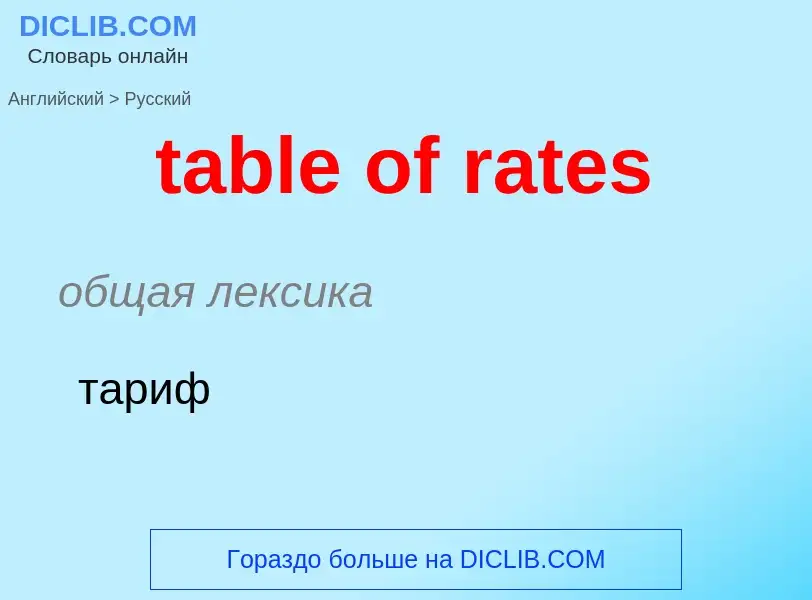Translation and analysis of words by ChatGPT artificial intelligence
On this page you can get a detailed analysis of a word or phrase, produced by the best artificial intelligence technology to date:
- how the word is used
- frequency of use
- it is used more often in oral or written speech
- word translation options
- usage examples (several phrases with translation)
- etymology
table of rates - translation to russian
общая лексика
тариф
финансы
налогооблагаемая стоимость (стоимость объекта собственности, которая является базой начисления налога на данный объект собственности)
синоним
Смотрите также
Definition
.
Wikipedia
Listed below is a table of historical exchange rates relative to the U.S. dollar, at present the most widely traded currency in the world. An exchange rate represents the value of one currency in another. An exchange rate between two currencies fluctuates over time. The value of a currency relative to a third currency may be obtained by dividing one U.S. dollar rate by another. For example, if there are ¥120 to the dollar and €1.2 to the dollar then the number of yen per euro is 120/1.2 = 100.
The magnitude of the numbers in the list does not indicate, by themselves, the strength or weakness of a particular currency. For example, the U.S. dollar could be rebased tomorrow so that 1 new dollar was worth 100 old dollars. Then all the numbers in the table would be multiplied by one hundred, but it does not mean all the world's currencies just got weaker. However, it is useful to look at the variation over time of a particular exchange rate. If the number consistently increases through time, then it is a strong indication that the economy of the country or countries using that currency are in a less robust state than that of the United States (see e.g., the Turkish lira). The exchange rates of advanced economies, such as those of Japan or Hong Kong, against the dollar tend to fluctuate up and down, representing much shorter-term relative economic strengths, rather than move consistently in a particular direction.
The data are taken at varying times of the year or maybe the average for the whole year. Some of the data for the years 1997-2002 refers to the rate on, or close to, January 1 of that year. Some of the data for 2003 refers to rates on May 28 for countries beginning with A-E, and June 2 for countries listed F-Z. Exchange rates can vary considerably even within a year and so current rates may differ markedly from those shown here. Caveat lector.

